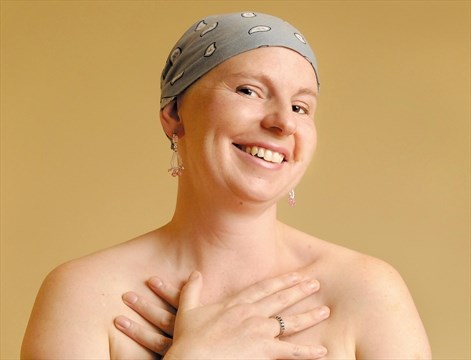Radiation therapy is a common treatment for breast cancer, with approximately 50% of breast cancer patients receiving radiation at some point during their treatment.1 It is commonly done 5 days per week for 5-25 treatments total. The side effects and healing from radiation can be split into two phases: the acute phase and the long-term phase.
The acute phase occurs during and immediately after radiation, up to 2 weeks after the last treatment. During this phase, the area treated is undergoing inflammatory processes and skin changes. Examples of possible skin changes include change in colour, dryness, itchiness, and rashes (dry or wet). Skin care is very important during this time. Common recommendations include using a moisturizing cream such as glaxal base, avoiding extreme hot or cold, and wearing loose clothing over the area being radiated. If your skin is very irritated, it may be best to avoid excessive sweating but exercises like stretching and walking are generally safe. Another common acute side effect of radiation is fatigue. It is currently recommended to do moderate-intensity aerobic exercise 3 times per week for 30 minute sessions to help with fatigue.2 This can include activities like a brisk walk, biking, or yoga.
The long-term phase occurs weeks to months after radiation. During this phase, your body begins to lay down scar tissue as a response to the damage from radiation. This occurs in the healthy tissues near the radiation site including muscles, ligaments, and organs, which can lead to long-term tightness. This condition is often referred to as “radiation fibrosis”. One of the best ways to help minimize the long-term tightness is stretching exercises. These exercises should be done daily to help ensure you maintain good mobility in the area(s) affected.
While these general recommendations can be helpful, please see your doctor or physiotherapist regarding any medical or rehabilitation concerns. A physiotherapist can help address these issues and create a personalized treatment plan.
References:
- Langlands, F., Horgan, K., Dodwell, D., Smith, L. (2013). Breast cancer subtypes: response to radiotherapy and potential radiosensitisation. Br J Radiol. Mar;86(1023):20120601.
- Campbell, K., Winters-Stone, K., Wiskemann, J., May, A., Schwartz, A., Courneya, K., Zucker, D., Matthews, C., Ligibel, J., Gerber, L., Morris, S., Patel, A., Hue, T., Perna, F., Schmitz, K. (2019). Exercise guidelines for cancer survivors: consensus statement from international multidisciplinary roundtable. Medicine & Science in Sports & Exercise 51(11):p 2375-2390


